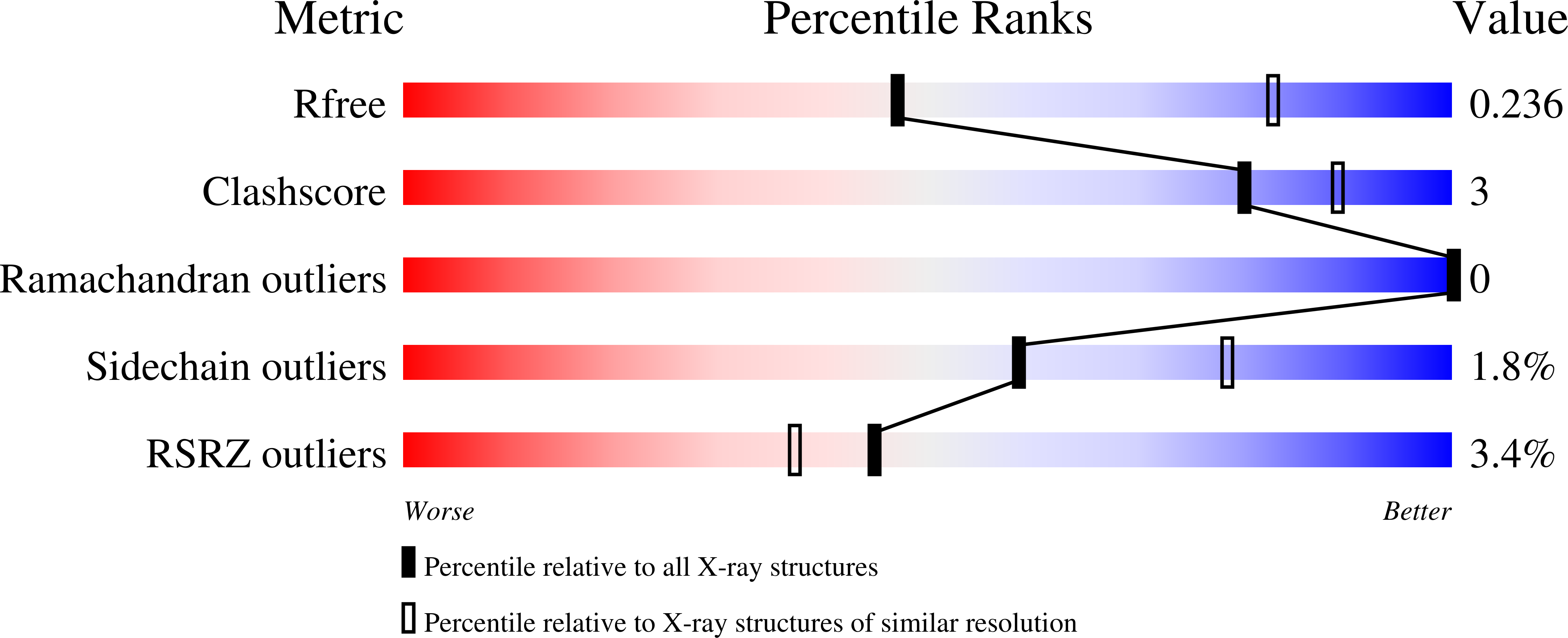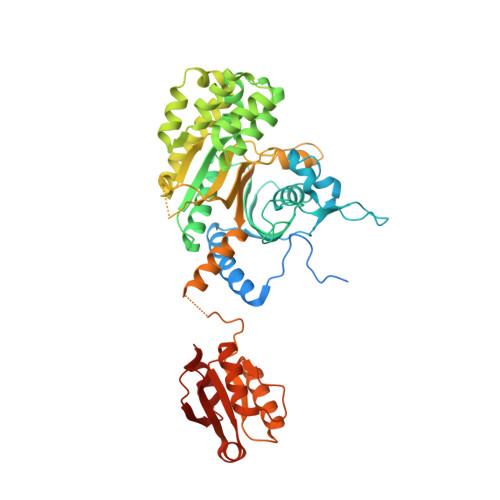Comparison of histidine recognition in human and trypanosomatid histidyl-tRNA synthetases.
Koh, C.Y., Wetzel, A.B., de van der Schueren, W.J., Hol, W.G.(2014) Biochimie 106: 111-120
- PubMed: 25151410
- DOI: https://doi.org/10.1016/j.biochi.2014.08.005
- Primary Citation of Related Structures:
4PHC - PubMed Abstract:
As part of a project aimed at obtaining selective inhibitors and drug-like compounds targeting tRNA synthetases from trypanosomatids, we have elucidated the crystal structure of human cytosolic histidyl-tRNA synthetase (Hs-cHisRS) in complex with histidine in order to be able to compare human and parasite enzymes. The resultant structure of Hs-cHisRS•His represents the substrate-bound state (H-state) of the enzyme. It provides an interesting opportunity to compare with ligand-free and imidazole-bound structures Hs-cHisRS published recently, both of which represent the ligand-free state (F-state) of the enzyme. The H-state Hs-cHisRS undergoes conformational changes in active site residues and several conserved motif of HisRS, compared to F-state structures. The histidine forms eight hydrogen bonds with HisRS of which six engage the amino and carboxylate groups of this amino acid. The availability of published imidazole-bound structure provides a unique opportunity to dissect the structural roles of individual chemical groups of histidine. The analysis revealed the importance of the amino and carboxylate groups, of the histidine in leading to these dramatic conformational changes of the H-state. Further, comparison with previously published trypanosomatid HisRS structures reveals a pocket in the F-state of the parasite enzyme that may provide opportunities for developing specific inhibitors of Trypanosoma brucei HisRS.
Organizational Affiliation:
Department of Biochemistry, University of Washington, Seattle, WA 98195, USA.
















